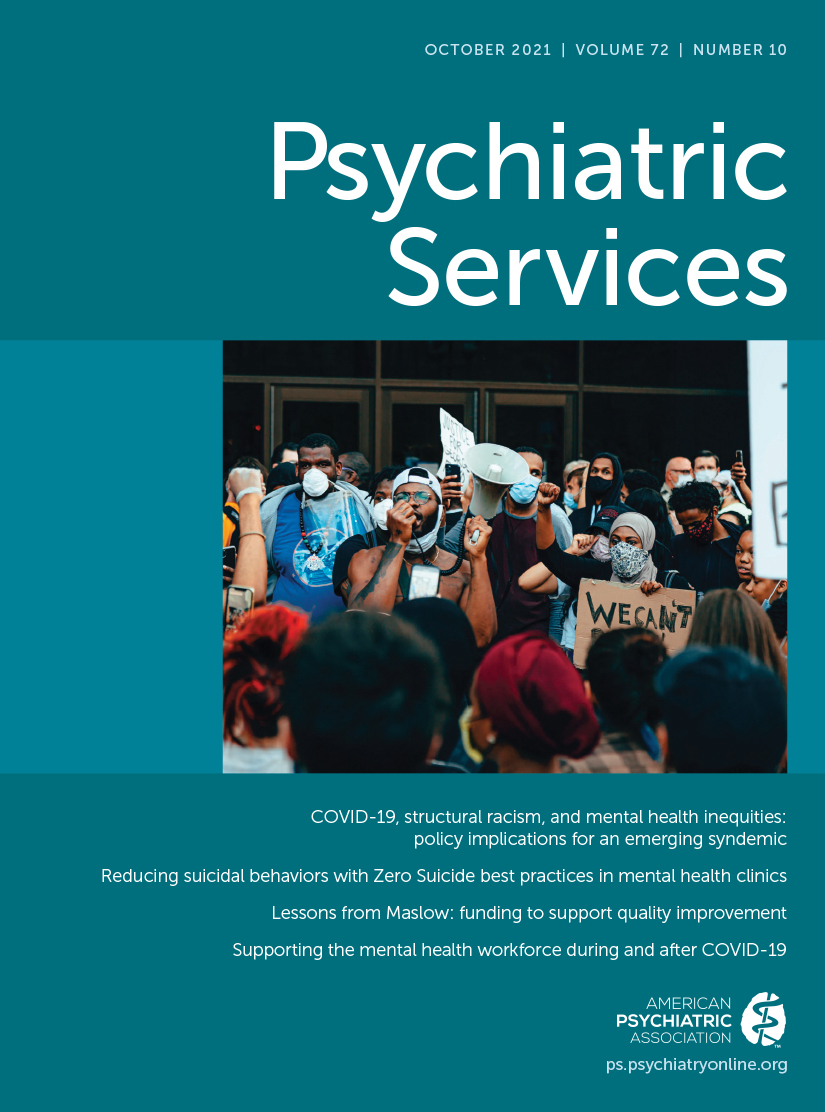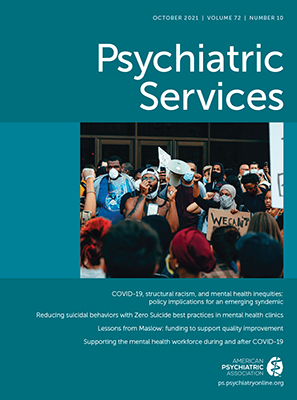Increasing the quality of health care in community settings is a primary focus of public health policy. Recently, federal and regional organizations have invested heavily in the implementation of evidence-based practice (EBP) to reduce the variability in service quality and outcomes in health care. The face validity of this approach is appealing. Ultimately, however, these efforts may fail for the same complex reasons that drive the variability in service quality and outcomes in the first place. We argue for prioritizing policy reform and increased funding to improve the quality of community mental health and substance use services.
This perspective stems from decades of work in partnership with Philadelphia’s public mental health and substance use system. We have collaborated with system leadership to advise on and study EBP implementation with a suite of approaches, including observations, interviews, and surveys. Studying the rollout of system-wide policies and initiatives designed to increase EBP use has enabled us to uncover the stressed financial infrastructure of mental health and substance use services (
1,
2). Despite inspired leadership and dedicated policy makers, payers, agency leaders, and clinicians, we have not overcome the systemic challenges in the business of delivering mental health and substance use treatment. Community agencies are in dire financial straits (
3), causing many administrators to make the difficult decision to shift their workforce from salaried clinicians to independent contractors (
4). We know little about the consequences of this change, although organizational research from other work settings suggests that it will likely not result in better care. Agency leader and clinician turnovers happen frequently, which affects agency culture, patient engagement, and outcomes.
Agency leaders unanimously tell us, “EBPs are great, but I have to keep the lights on,” prompting us to consider Maslow’s hierarchy of needs as it applies to public mental health and substance use services. Maslow posited that basic needs, such as food and water, must be met before one can achieve higher-level needs. In a similar vein, the agencies serving our most vulnerable citizens are struggling to stay solvent. Implementing EBP is akin to a higher-level need—agency leaders endorse it as a priority, but in the same breath, ask how they can achieve this goal given their uncertain financial landscape and other organizational pressures. We are staunch believers in the value of EBPs; however, we have concluded that EBPs will not solve these financial problems, nor will
any of the other many initiatives to improve the quality of care, such as performance contracting, measurement-based care, learning mental health systems, or value-based purchasing. These approaches often layer complex requirements onto already stressed environments. Initiatives to improve service quality shift with the times and with funder priorities, but the importance of adequate funding holds steady. The need to address these fundamental barriers to high-quality, evidence-based mental health and substance use services and the importance of adequate funding is not idiosyncratic to Philadelphia, where we conduct our research. Adequate funding is a key factor in most leading implementation science frameworks (
5). National evaluations of EBP implementation and sustainability all have found that inadequate funding, particularly low reimbursement rates, is the single most critical factor in an organization’s decision to adopt, sustain, or discontinue an EBP (
6).
At the time of this writing, the COVID-19 pandemic has been raging in the United States over the past 7 months. The suffering, tragic losses, and economic hardships are likely only beginning. The full impacts of the pandemic on individuals who have, or are vulnerable to, mental health and substance use problems are still unknown, but many of these individuals will almost certainly experience ramifications arising from the general medical and psychological impacts of this disease (
7). A focus on funding for our community mental health and substance use treatment systems will be crucial in the aftershocks of COVID-19. Our hope is that the new acknowledgment of the importance of mental health in the United States in light of the COVID-19 pandemic may present an opportunity for reforming mental health and substance use policies and for delivering a large infusion of resources. Below we describe three policy directions and provide research recommendations for improving quality of care in community mental health and substance use, beginning with increased funding.
Increase Funding
Policy reform is needed to increase funding for mental health treatment and substance use prevention and intervention. Increasing reimbursement rates is the first and most critical step because payment for intervention is lower than for every other area in medicine. One in two Americans will have a mental health or substance use condition in their lifetime. The opioid crisis, considered the greatest preventable public health crisis of the current generation, is caused by a treatable substance use disorder. Directly related to deteriorating national mental health in the United States, suicide rates are increasing in all age groups, particularly among school-age youths and adolescents (
8). Yet, federal funding for mental health and substance use treatment comprises only 7% of total U.S. health care spending. Funding for substance use treatment is actually shrinking (
5).
We need to advocate more effectively for prioritizing and valuing mental health and substance use treatment in this country. As a result of chronic underfunding, a less trained workforce delivers mental health and substance use care (
9–
11). Increasing rates will buoy an underpaid workforce and attract and retain trained clinicians. Enhanced reimbursement will pay agencies operating on the slimmest of margins and support systematic change so that agencies have the bandwidth and capacity to devote efforts to high-quality care rather than worrying about how to keep the lights on. The opioid epidemic, and even more recently the response to COVID-19, have revealed that swift and major changes in funding and regulation can happen in a matter of weeks. For example, Congress appropriated billions of dollars to expand treatment for opioid use disorder, and insurers have dramatically changed regulations regarding telemedicine to expand treatment during the pandemic. We should take similar approaches to increasing reimbursement rates to attract, develop, and support a highly qualified workforce and the organizations who serve individuals with mental health and substance use difficulties.
Clarify Incentives and Outcomes
An increase in funding is necessary but not sufficient. Skeptics may argue that multiple large-scale demonstrations have so far not been effective. Evidence for the effectiveness of pay-for-performance and alternative payment arrangements in behavioral health is modest at best (
12,
13). We believe these large-scale demonstration projects have not worked for at least three reasons. First, it is possible that the incentives have not been large enough to overcome the preexisting severe fiscal constraints in these organizations (
14). Second, incentives are often designed by payers and do not follow the evidence base for providing effective rewards, such as being salient and timely. Incentives are typically not developed in collaboration with multiple stakeholders, including agency leaders and clinicians. Our previous research shows that payers use incentives that are easy to deploy (such as paying for training) rather than those they perceive as most effective (such as paying for outcomes) (
15), suggesting misalignment. More research is needed on incentive effectiveness, whom to incent (e.g., clinician or agency), how to make incentives more salient and impactful in these environments, and how to remove barriers to deploying complex incentives.
Third, and perhaps most importantly, as a field we still have not reached consensus on outcomes in mental health and substance use (
16). Without agreed-upon outcome measures, we lack incentives. There are still few endorsed measures of key behavioral processes and outcomes, especially recovery outcomes. This reinforces a misconception that treatment for behavioral health conditions cannot be precisely measured. This further puts payers in a difficult dilemma of figuring out what to pay for. Our failure as a field to identify and establish outcomes has harmed the people for whom the incentives are most intended to help.
Partnership With Accountability
Measuring and incentivizing outcomes both engender accountability. To do this effectively, research and business partnerships with behavioral health treatment organizations should be established. Community agencies have many competing demands, from providing care to patients with complex conditions to remaining solvent under shrinking budgets. Many agencies may benefit from partnerships with researchers who can help them shoulder the immense task of measurement-based care. We must draw from the organizational literature and established business models to ensure that publicly funded agencies are operating at maximum efficiency. With established measures, researchers need to partner with community agencies to demonstrate to payers and policy makers that increased funding is the right thing to do not just from a societal perspective, but also from a business, decision-maker, and payer perspective. We must also accrue evidence on how to make the delivery of high-quality care more cost-effective to optimize the return on investment from behavioral health dollars. For example, do enhanced rates, increased consumer demand, or reduced no-show rates make EBPs profitable for an agency to implement? Last, we must further prioritize research on how to finance and align data collection and infrastructure at the organizational level so that it supports high-quality care and creates data environments conducive to high-quality care.
EBPs will never be the sole panacea for the quality chasm in the current fiscal mental health and substance use treatment environments. The lessons of Maslow and the reality of the financial challenges facing our system suggest that our field needs a paradigm shift toward prioritizing increased funding. Only by increasing funding can we create structures and processes to enhance and optimize the use of behavioral health dollars to improve the quality of care through EBPs or other initiatives. Without such shift, our efforts to improve will remain in vain.
Acknowledgments
The authors are grateful for the mentorship and friendship of Trevor Hadley (1946–2020), a man who devoted his career to improving care for people with mental illness. The authors also thank their community partners, especially the Department of Behavioral Health and Intellectual DisAbility Services and Community Behavioral Health in Philadelphia.

